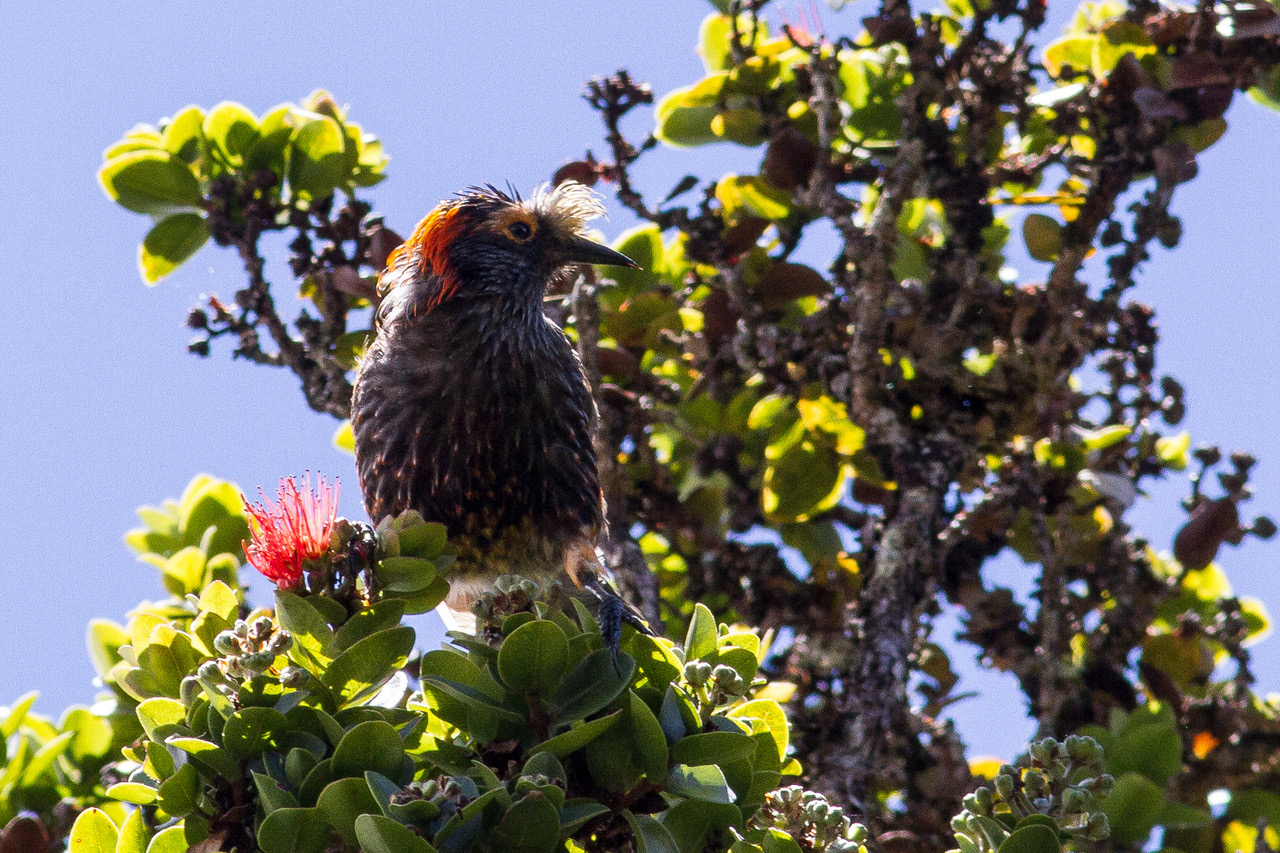The state Department of Land and Natural Resources and the American Bird Conservancy were awarded their motion for summary judgment in a case brought by Maui resident Tina Lia and a group she founded last year, Hawaiʻi Unites.
Lia had challenged the Board of Land and Natural Resources’ decision to approve the release of male mosquitoes treated with a strain of the Wolbachia bacteria different from that carried by the wild mosquitoes. Wild female mosquitoes that mate with the lab-treated males would not produce viable offspring. By interfering with the reproduction of mosquitoes through this so-called Incompatible Insect Technique, the hope is to stop the spread of the mosquito-borne avian malaria parasite that threatens species of native birds, already perilously close to extinction.
Lia had claimed that the state would in fact be releasing foreign bacteria into Hawaiʻi, with unknown impacts. She argued that the state should have been required to prepare a full-blown environmental impact statement before moving forward with the lab-treated male mosquitoes. The BLNR accepted a final environmental assessment for the project last year.
Already the ITT program has begun to be implemented in East Maui. Last fall, the BLNR approved its use on Kauaʻi as well.
Following a January 17 hearing on the state’s motion for summary judgment and Hawaiʻi Unites’ opposition memorandum, 1st Circuit Judge John Tonaki issued his ruling in a minute order of January 29, writing: “In an effort to save native Hawaiian birds which are in danger of extinction, the state … seeks to undertake a project that aims to suppress mosquito populations carrying avian malaria,” a project whose environmental assessment was accepted by the Land Board.
“Whether an Environmental Assessment is sufficient under HRS Chapter 343 is a question of law, which is property addressed through summary judgment,” he wrote. “An EA need not be exhaustive to the point of discussing all possible details bearing on the proposed action but will be upheld as adequate if it has been compiled in good faith and sets forth sufficient information to enable the decision-maker to consider fully the environmental factors involved and to make a reasoned decision” – requirements that Judge Tonaki found were met by the BLNR in the challenged document.
As for the arguments of Hawaiʻi Unites that the final EA was deficient, the judge wrote: “A reading of the FEA reveals that many of the issues raised by plaintiff were in fact addressed in the FEA and … some of the potential impacts of the project were raised as mere possibilities by plaintiff. Such arguments do not establish that the BLNR’s acceptance of the FEA and issuance of a [finding of no significant impact] were clearly erroneous.”
Tonaki’s final judgment was published on February 6. Since then, Hawaiʻi Unites announced it is seeking funds to allow it to appeal the judge’s ruling. “If we’re able to raise $30,000 by the end of February 2024, we will file an appeal,” it says on its website. “Please donate so we can continue to move our legal case forward.”
The state has been working to get the IIT project underway for since at least 2016. Nearly three years ago, the Board of Agriculture approved a permit to allow the importation of the lab-treated male mosquitoes. Actual release of the insects did not start until last year.
— Patricia Tummons
For Further Reading
Environment Hawaiʻi has reported on this topic in the following articles, all available online at environment-hawaii.org:
- “Can Genetic Engineering Save the ʻIʻiwi? Scientists in Volcano Weigh the Odds,” March 2020;
- “Board Talk: Fate of Endangered Forest Birds Hinges on Landscape-Scale Mosquito Control,” April 2021;
- “So Long, Skeeters,” New & Noteworthy, July 2021;
- “Board Talk: ʻAkikiki Rescue,” December 2021;
- “Board Talk: Board Approves Mosquito Control EA,” April 2023;
- “Court Roundup: Opponent of Mosquito Release Loses Case in Federal Court” and “Board Talk: Board Denies Petition for Contested Case on Mosquito Control Suppression Project,” June 2023;
- “Conservation Groups Will Take Part in Lawsuit Opposing Mosquito Release,” July 2023;
- “Parties in Mosquito Lawsuit Spar over Science, Balance of Harms” and “Board Talk: Kīpahulu Management,” August 2023;
- “Board Talk: Board Accepts Final EA for Kauaʻi Mosquito Release,” December 2023.


Leave a Reply